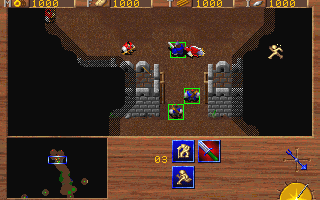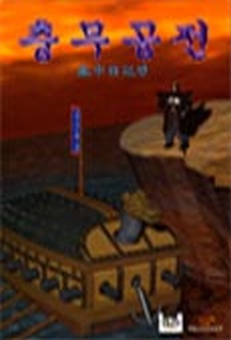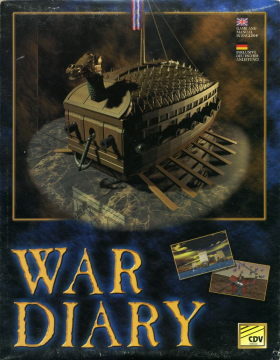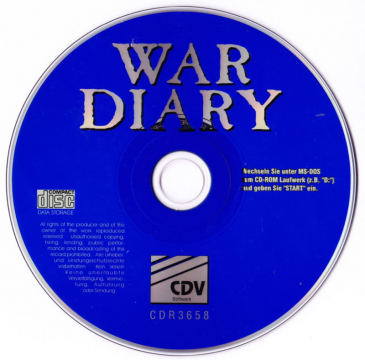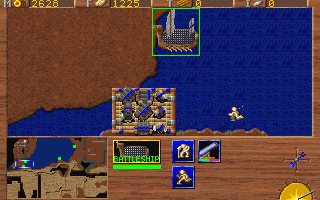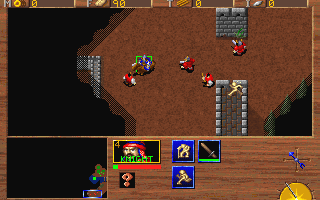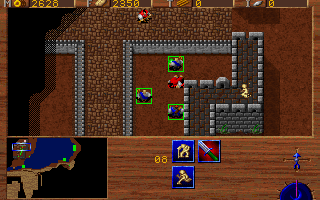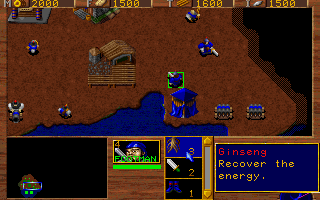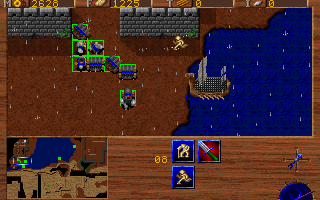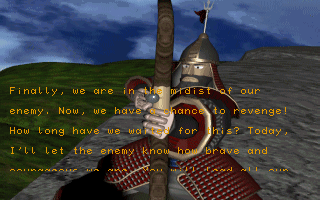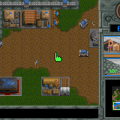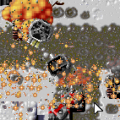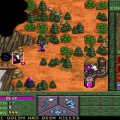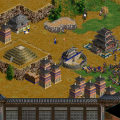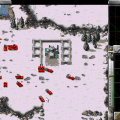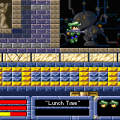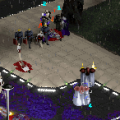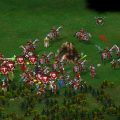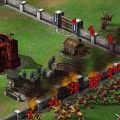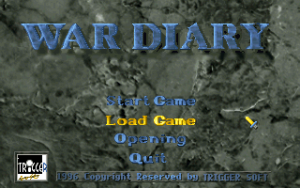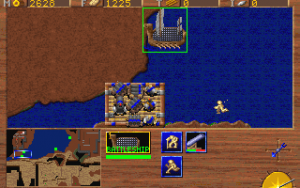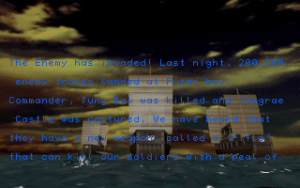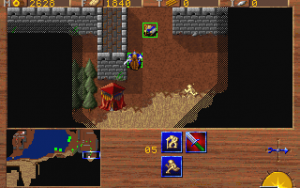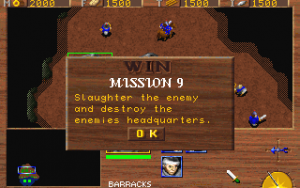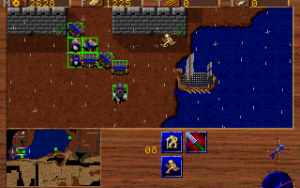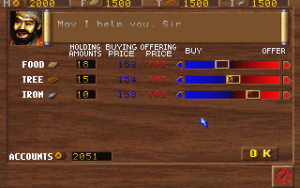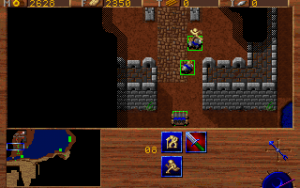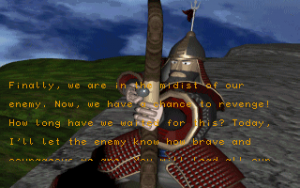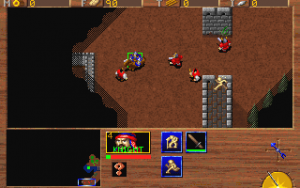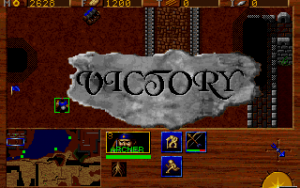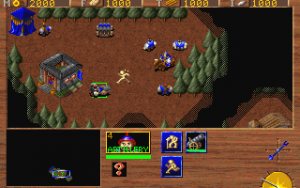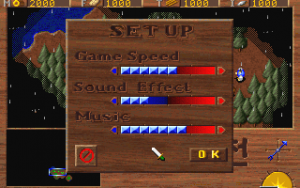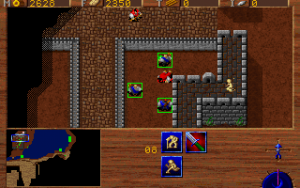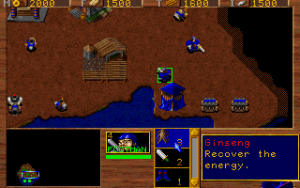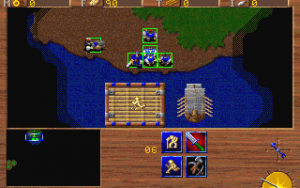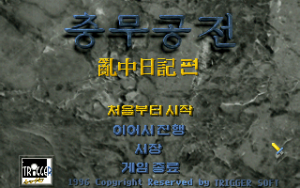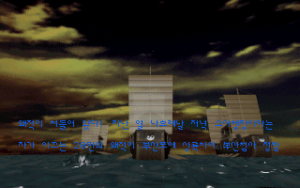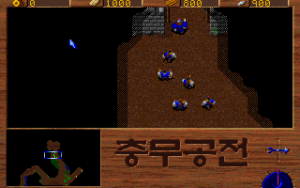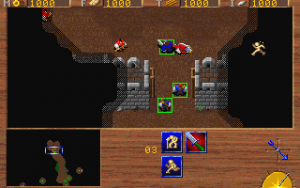- War Diary
- War Diary II
One of Korea’s defining historical conflicts is the Seven Years War in the late sixteenth century. It is not to be confused with the Seven Years’ War, an entirely different event (apostrophes matter). During the Seven Years War, known as the Imjin War in Korea, Japan attempted to invade the Korean peninsula – then ruled by the Joeson dynasty – twice. Initially, the recently united Japan intended to use it as a springboard to the Asian mainland, but later merely tried to subdue the country. Both invasions were ultimately repelled by the Koreans and their overlords, the Ming dynasty of China. Though the war did not lead to any immediate border changes, it devastated Korea, had a significant impact on Japan’s political and cultural development, and challenged the regional hegemony of Ming China. This was one factor which contributed to the later downfall of the Ming dynasty. The Imjin War was also Asia’s first large-scale war fought with modern weapons such as arquebuses and cannons.
With this in mind, it comes to no surprise that Korean game studios decided to use the Imjin War as a template for several real- time strategy games. The first of these games is War Diary (충무공전: 난중일기편), named after the war diary of Toyotomi Hideyoshi, the Japanese commander who spearheaded the invasions. The game was developed by Trigger Soft Corporation in cooperation with HQ Team, an independent game studio. War Diary would later receive a sequel titled War Diary II: War Hero’s Story (충무공전 II : 난세 영웅전), this time developed by Trigger Soft alone. HQ Team released their own title based on this conflict, Seven Years War. Seven Years War in turn got its own sequel titled “Seven Years War 2” (임진록 2), a standalone expansion for said sequel as well as a planned third full entry in the series that was never released.
War Diary is a real-time strategy game with the three core features established by Dune II a couple of years earlier: Base construction, resource gathering, and army management. The game is strictly singleplayer and consists of a twelve-mission campaign for the Korean side. There is no Japanese campaign, nor is there a skirmish or multiplayer mode. All missions have to be completed in order. The first two thirds of the campaign consist of maps based on historical battles, whereas the last couple of maps feature a fictional Korean punitive expedition to Japan.
Despite some graphical similarities to WarCraft: Orcs & Humans, War Diary uses the Dune II system of construction: Buildings are constructed via a headquarters and, once construction has finished, have to be placed within the vicinity of another building. The headquarters can never be replaced and losing it means defeat. Likewise, the destruction of the enemy headquarters means victory in missions where the destruction of the enemy is the goal. The headquarters is also used to train peasants, who, as video game tradition has damned them to, gather resources.
The games resources come in the form of lumber, gained by cutting trees, food harvested from fields scattered over the map, iron, as well as money. Lumber and food come in finite amounts, and money can’t be gathered at all – it has to be traded for via a trading menu. Said menu allows the player to trade any resource for any other. Thus, shortages of one material can be balanced by trading a surplus of another one. On most maps, the player will soon or later run low on food and especially lumber. Running out of food, which is constantly consumed by the player’s troops, has grave consequences: Hungry troops loose hit points, and running low for too long will doom the player’s entire army.
This is where the last resource, iron, comes into play. All one needs to generate iron is a smelter and a peasant operating it. The dutiful peasant brings iron to the headquarters in fixed intervals without consuming any additional resources. Thus, iron allows the player to become self-sufficient. It seems the developers knew this and decided to make iron the least valuable resource on the marketplace. As a result, later missions require the player to fill their base with a dozen smelters or more to guarantee a steady flow of resources.
Seeking out new fields or woods is generally risky and rarely worth it. It is also slow, as no second headquarters can be constructed and peasants have to cover great distances to harvest new resources. Resources separated from the player base by water remain entirely inaccessible. In the end, half the maps have plenty of resources and require no real investment into the comparably complex economic system War Diary offers. Some even provide the player with so much food that none needs to be gathered at any point during the mission. The other half of the maps are only manageable with a fully iron-based economy, after which the trading aspect turns into a bothersome routine. The enemy is of course fully financially independent. The Japanese only ever have a single peasant (always dressed in gray despite all other enemy troops being red) and never suffer from any shortages whatsoever. This makes waging war on the AI’s economy impossible, removing something that is a core gameplay element in other games of the time.
The remaining buildings hold no surprises. There are a couple of production facilities – the barracks, stables, naval yard, temple, and foundry – as well as a tower for base defense. What is fairly unique is the unit production, as units need to be equipped with weapons before they are ready to roll out. The barracks, for example, trains only basic soldiers. To turn these into swordsmen or archers, they need to be equipped with the respective weapons. In theory, this adds flexibility and realism. In practice, it primarily adds more mouse clicks. Soldiers need to be trained and equipped individually with weapons that also need be built individually. The options are rather limited; soldiers can only be equipped with the aforementioned swords and bows. Cannoneers and war ships can only be equipped with cannons and nothing but cannons, and the fact that the former do not come with cannons adds complexity without adding depth – a cardinal sin in game design.
To be fair, the equip feature does serve a second function, because War Diary also has a weapons decay system. Swordsmen who stab enough will require a new sword from time to time, as archers require new bows – not just arrows; apparently their bows disintegrate after a while. Thankfully, the new weapons can be teleported directly into the hands of the player’s soldiers in a contrasting bit of non-realism, and do not need to be equipped at the base. Nevertheless, this hardly justifies the equipment system and just makes it even fiddlier. Nothing interrupts the action better than having to re-equip your entire assault troop because their weapons disappeared while they were fighting in the middle of the enemy base.
Especially fiddly are priests. Priests in War Diary do not have the classic recharging magic bar or spells with cooldowns, but have to be equipped with magic scrolls instead. These decay just like weapons do. Priests cannot be equipped with all scrolls at once, and new scrolls can only be equipped once the old ones have been used up. Thus, a priest with a healing spell cannot be turned into a fireball-throwing priest at will, limiting this already clunky unit even more. In addition, some of the utility spells have almost no utility. One spell sets the time to midnight, which blinds the player but does not affect the AI. Another spell detects land mines, which is theoretically useful, but covers such a small area that it almost never allow the player to transverse mine fields safely. It is easier to train some extra troops and have them clear the mines the hard way.
On top of all of that, War Diary also has different weapon subtypes. The player starts with access to first-level weapons. Later, weapons all the way up to level seven become available. However, there is no functional difference between a first-level sword and a seventh-level sword except for the latter being a little stronger. There is never any reason not to build and use the strongest weapons available. Weaker weapons simply become obsolete. At the same time, the difference in power is not significant to give the player a sense of progression.
What does make a difference are the accessories troops can be equipped on top their weapons. There is an off-hand dagger for extra damage, boots for a speed boost, a shield for extra defense, and ginkgo for regeneration. None of these items discriminates between unit types. The boots work on mounted units and apparently double as horseshoes, and the dagger somehow makes bows stronger. While these accessories required even more clicking, they are genuinely useful, and allow for some unit customization.
Even more useful than any land unit are the naval units. The Imjin War included a number of noticeable sea battles, and the armored turtle ships employed by the Joeson dynasty were among the best ships worldwide. Thus, it is not surprising that the developers included this bit of Korean heritage. War Diary keeps it simple and only has two naval units: The transport and the war ship. The transport is effectively a raft with space for three times three land units. Units on the raft are exposed, but can also fire on targets while they are being transported. The war ship is a cannon-wielding behemoth whose firepower and durability outclasses that of any other unit by a magnitude. While this is realistic – one needs a lot of sword swings to sink an actual war ship – video games in general take so many liberties already that this remains a questionable design choice. The mighty war ship can stop entire squads of land units, and as a result, later missions become contests to accumulate as many war ships as quickly as possible. The fact that war ships can repair themselves in the middle of a battle only makes this worse. Once one side wins the arms race, the other side has effectively lost, because the overpowered war ships can only be countered by even more overpowered war ships.
Nevertheless, War Diary offers some variety with its mission design. In most missions, the enemy headquarters needs to be destroyed, but some missions put a spin on this: A prince needs rescuing, peasants needs to be escorted to the base before and an army can be assembled, island hopping is required, or all enemy troops need to be eliminated with no reinforcements being available. Even Ming China makes an appearance in a mission where a castle needs to be defended until help arrives. With only twelve missions, the campaign remains short. It is dragged out a bit by the unforgiving difficulty of the later missions, whose high level of frustration stems primarily from the aforementioned fiddliness, the ridiculously powerful war ships, and the hassle of settings up the economy.
The AI does not have to bother with any of this. Only ever provided with a single worker, the AI conjures resources from nowhere, has swords that never go blunt, sees through the fog of war, and always starts with plenty of units and base defenses. All of this makes the click-intensive subsystems of War Diary feel like even more of a punishment for the player, even if one takes into account that this game stems from an era where rampant AI cheating was the norm. Apart from that, the AI is not particularly clever. It sends units against the player in regular intervals and that is it. One thing worth noting is that the AI can execute naval invasions properly, which is moderately remarkable.
As mentioned above, Korea is the only playable faction. The Japanese are not playable, and there is no way to take over enemy units or structures. This is not too tragic, as the Japanese faction is mostly just a copy of the Korean faction with slightly different graphics. The same goes for the Chinese faction, except the poor Ming do not even get custom portraits. The one custom unit the Japanese have is the arquebuser, who is a better version of the Korean archer. This is somewhat historically accurate. The Japanese used firearms extensively, whereas the Koreans had not adopted them to a significant degree when hostilities broke out.
Those who fight their way through the campaign are rewarded with a mission briefing before every missions. The briefings consist of text crawling over nicely-drawn images, and tell what castle is under threat or which fortress needs to be sacked. The quality of the English translation is acceptable, but was most likely done by some those Hangul is better than their English. Less acceptable is the white font against the often light background, which makes some briefings borderline unreadable. Thankfully, the briefing is also read out – in Korean, that is, even in the English localization. Equally thankfully, the mission goal can be checked later via the in-game menu. Here, the translation is often comically poor and sometimes so cryptic that it unintentionally makes the mission more difficult. There are some other linguistic oddities too. For example, lumber is translated as “tree”, and the samurai unit is referred to as a “knight”. However, none of these are detrimental to the gameplay. From time to time, the player is also rewarded with a fully animated pre-rendered cutscene. The quality of these cutscenes is laughably bad, especially with regard to the characters, all if which look like creepy wide-eyed plastic dolls. Interestingly, outside Kore, War Diary was apparently only released in Germany, despite the English translation. The German version comes with a German-language manual and box, but in-game English text and Korean voice clips. The manual is quite extensive, and in addition to information on the game itself also contains a history of the Imjin War and background information on the factions. Thus, anyone who wants to enjoy the game and not miss out on anything needs to be proficient in no less than three languages.
The game’s graphics are, cutscenes aside, not too bad. The units are distinct enough, and the game has colorful and slightly cartoonish graphics. The terrain is mainly brown, which makes Korea look a bit like muddy wasteland. However, this makes the blue and red Korean and Japanese units and structures stand out, which is both pleasant and easy on the eye. Nevertheless, the graphics, which make the game look a bit like an East Asian variant of WarCraft: Orcs & Humans, were dated back in 1996. In addition to that, the game only supports the basic DOS resolution of 320×200, with the control bar taking up more than a third of the screen. This was heavily criticized at the game’s release, especially in Europe and Japan. In those regions, War Diary was not released before 1998 and seemed terribly archaic.
Despite its flaws, War Diary remains playable for those who enjoy real-time strategy games from the era. Others will likely be frustrated by the game’s shortcomings and then-new features, which, while innovative and interesting, are clumsily executed and offer little improvement over other titles.
